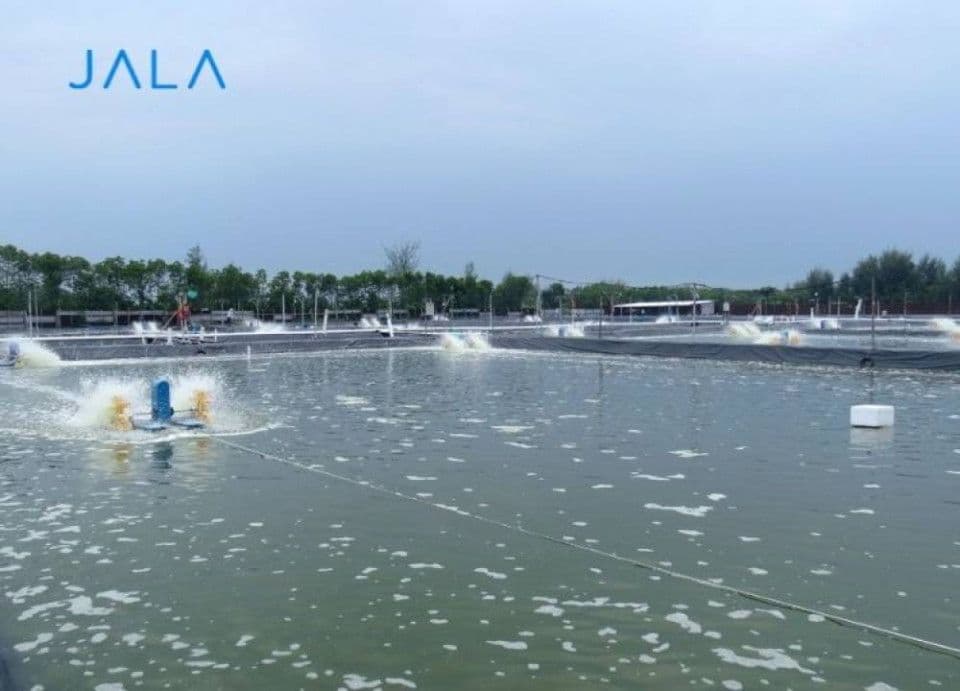
The pathogenic bacteria that cause various diseases to shrimps
Vibrio bacteria is a type of pathogenic bacteria that often infect vannamei shrimp (Litopenaeus vannamei). The diseases caused by Vibrio bacteria become a problem that hinders the production in ponds. These bacteria cause Acute Hepatopancreatic Necrosis Disease (AHPND), White Feces Disease (WFD), and Vibriosis to shrimps.
The monitoring process in cultivation is very important for detecting disease as early as possible in order to reduce risk. The process is conducted by observing the types of Vibrio bacteria, total bacteria, and correlating them to water quality and growth data.
Colony colors of Vibrio bacteria
Vibrio bacteria can be classified based on its colony colors. These colors can be identified in the laboratory. Each colony color has its own characteristics.
Yellow
The yellow colony is made up of Vibrio cholerae. This colony is formed by bacteria that ferment sucrose and lower the pH, resulting in acidic conditions.
Green
Vibrio bacteria that proliferates from Vibrio parahaemolyticus forms the green colony. The green colony is caused by Vibrio bacteria that are unable to ferment sucrose. Vibrio parahaemolyticus in water may cause infection that penetrate through the exoskeleton and spread through hemolymph.
Black
The black colony is caused by growing Vibrio damsela bacteria. If the bacteria colony is black, it is producing H2S. Vibrio damsela in water becomes the indicator of Vibriosis. This bacteria will proliferate if the shrimps are infected with Vibriosis.
Luminescent
Bright or luminescent colony color is the sign of growing Vibrio harveyi bacteria. The Luminescent colony, which is caused by Vibrio harveyi, shows high organic materials. This colony is made up of Vibrio harveyi that has gen Lux-n. Gen Lux-n is a gene that is responsible for emitting luminescent light.
Maximum limit of Vibrio bacteria in total
Total Vibrio bacteria from yellow, green, black, and luminescent colonies have a maximum limit of 1 x 104 CFU/ml. Meanwhile, the maximum limit of bacteria is 1 x 106 CFU/ml in total. Vibrio bacteria can be handled by observing the comparison between Total Vibrio Count and Total Bacteria Count (TBC), which is less than 1% of TBC. Vibriosis infection will occur if the total Vibrio exceeds 1%.
If the number of Vibrio in total exceeds the bacteria in total, Bacillus bacteria can be added and the water can be changed. Bacillus bacteria can be added because Bacillus can suppress Vibrio growth. Bacillus bacteria can produce antimicrobials that can inhibit the pathogenic bacteria.
References
‘Alawiyyah, T., Budiharjo, A., & Suprihadi, A. 2017. Isolasi, Enumerasi Dan Deteksi Molekuler Gen Toxr Pada Bakteri Vibrio parahaemolyticus Dari Tambak Udang Vannamae Di Rembang. Jurnal Biologi, 6(3), 96–102.
Aguilera Rivera, D., Prieto-Davó, A., Rodríguez-Fuentes, G., Escalante-Herrera, K. S., & Gaxiola, G. 2019. A vibriosis outbreak in the Pacific white shrimp, Litopenaeus vannamei reared in biofloc and clear seawater. Journal of Invertebrate Pathology, 167(1), 1–7.
Anjasmara, B., Julyantoro, P. G. S., & Suryaningtyas, E. W. 2018. Total Bakteri dan Kelimpahan Vibrio pada Budidaya Udang Vannamei (Litopenaeus vannamei) Sistem Resirkulasi Tertutup dengan Padat Tebar Berbeda. Current Trends in Aquatic Science I, 1(1), 1–7.
Evan, Y., Indrawati, A., & Pasaribu, F. H. 2021. Pengembangan Uji Cepat Metode Koaglutinasi Untuk Mendeteksi Antigen Vibrio parahaemolyticus Penyebab Penyakit Vibriosis Pada Udang Vaname (Litopenaeus vannamei). Biodidaktika: Jurnal Biologi Dan Pembelajarannya, 16(1), 45–57.
Handayani, S., Dwinanti, S. H., & Hadi, P. 2020. Pemanfaatan Sari Belimbing Wuluh (Averrhoa bilimbi L.) pada Pemeliharaan Udang Vaname (Litopenaeus vannamei) untuk Menekan Populasi Bakteri Vibrio sp. Koloni Hijau. Jurnal Sains Teknologi Akuakultur, 3(1), 33–41.
Hoar, Y., Salosso, Y., & Santoso, P. 2020. Identifikasi Parasit dan Bakteri Vibrio pada Kerang Darah (Anadara granosa) di perairan Tanah Merah, Kecamatan Kupang Tengah. 3(2), 57–66.
Marbun, J., Harpeni, E., & Wardiyanto, W. 2019. Penanganan penyakit white feces pada udang vaname Litopenaeus vannamei menggunakan aplikasi pakan yang dicampur ekstrak lengkuas merah Alpinia purpurata k. schum. Depik Jurnal Ilmu-Ilmu Perairan, Pesisir Dan Perikanan, 8(2), 76–86.
Puspitasari, I., Mulyasari, C. D., & Yudayana, I. G. R. 2020. Korelasi Populasi Vibrio Terhadap Faktor Lingkungan Pada Kolam Pemeliharaan Larva Udang Vannamei (Litopenaeus vannamei) Di Situbondo, Indonesia. Jurnal Chanos Chanos, 18(2), 73–81.
Soemarjati, W., Yuliana, E., & Warlina, L. 2021. Analisis Daya Dukung Perairan Laut Untuk Budidaya Ikan Dalam Karamba Jaring Apung Di Kecamatan Kendit Kabupaten Situbondo. PELAGICUS: Jurnal IPTEK Terapan Perikanan Dan Kelautan, 2(2), 63–81.
Sumardi, S., Farisi, S., Ekowati, C. N., & Oktalia, S. A. 2019. Co-Culture Anoxygenic Photosynthetic Bacteria With Bacillus sp. Isolated From Hanura Beach Against Vibrio sp. Jurnal Ilmiah Biologi Eksperimen Dan Keanekaragaman Hayati, 6(2), 62–70.
About the author
The author is from Banyuwangi, East Java. She is an active student of Aquaculture studies, Sekolah Ilmu Kesehatan dan Ilmu Alam, Airlangga University. She is currently working on her final project.





